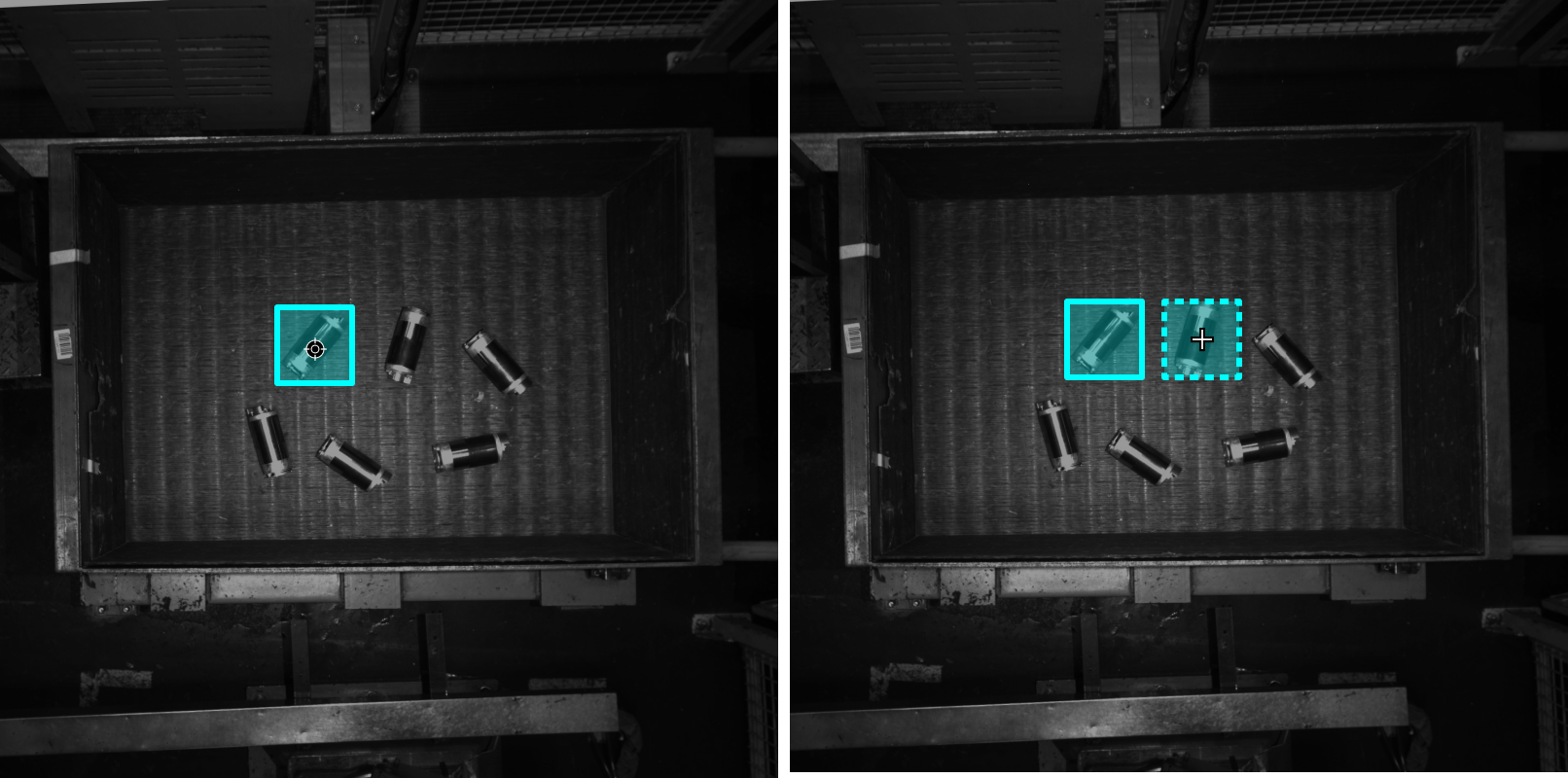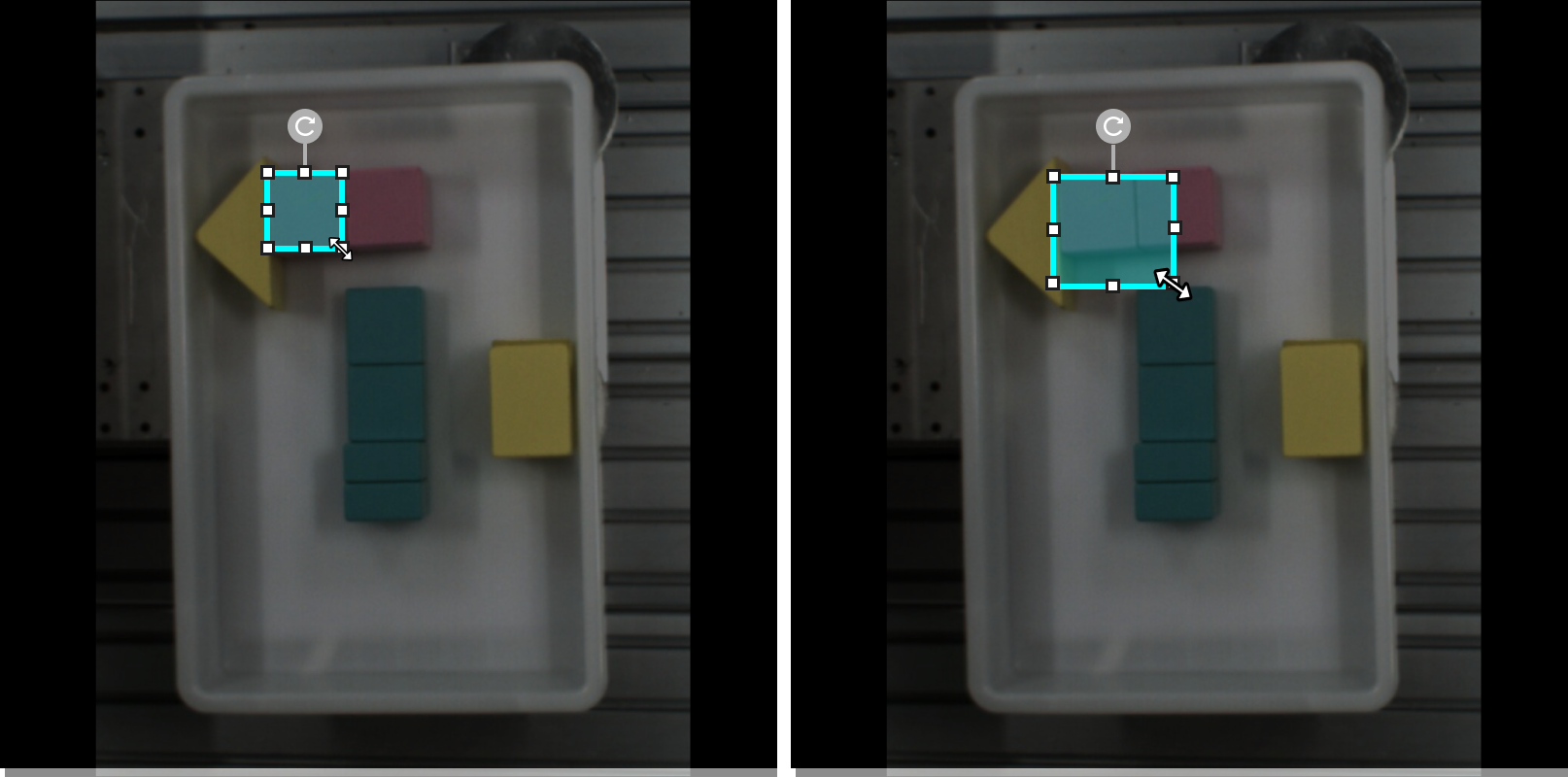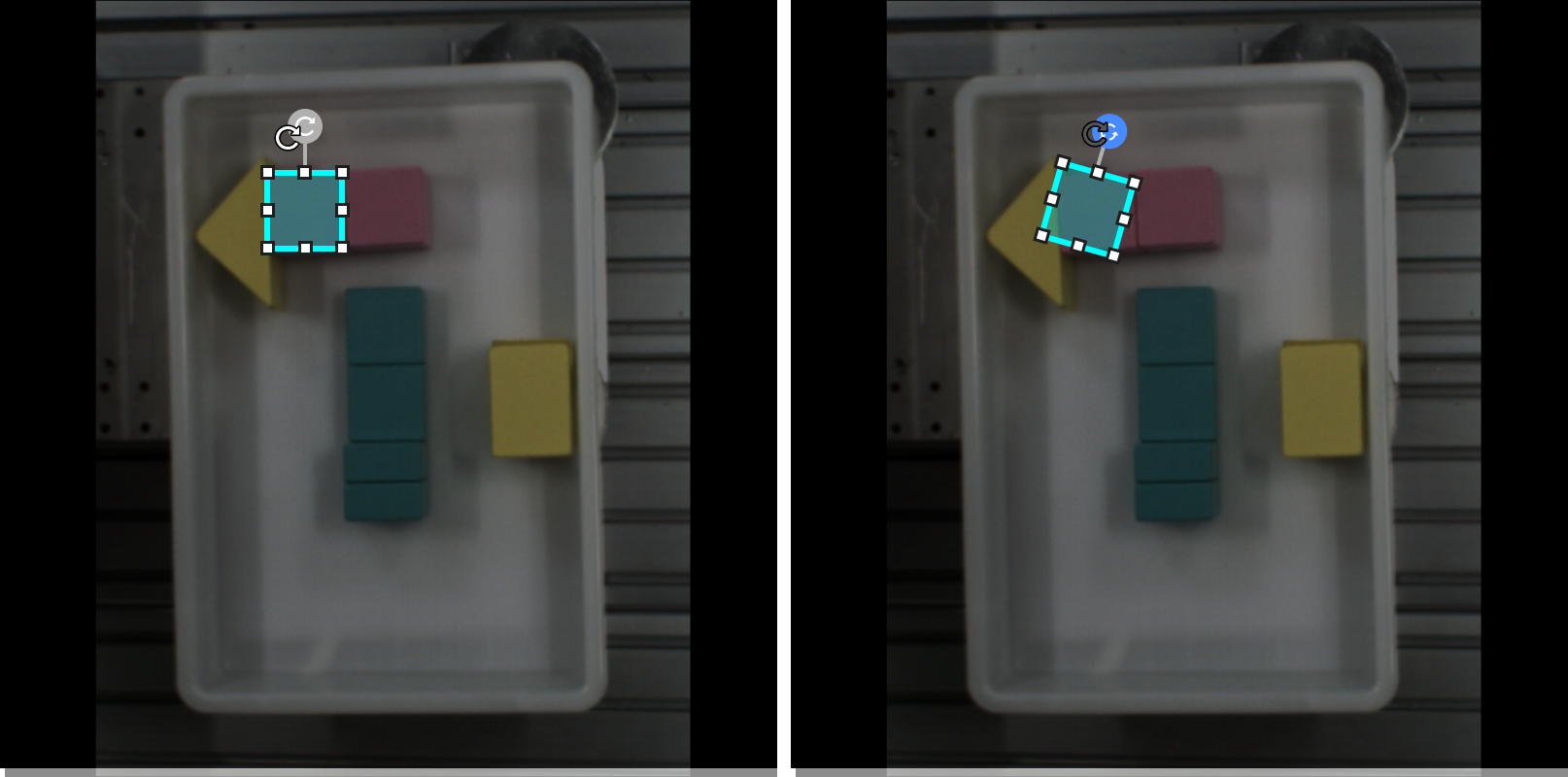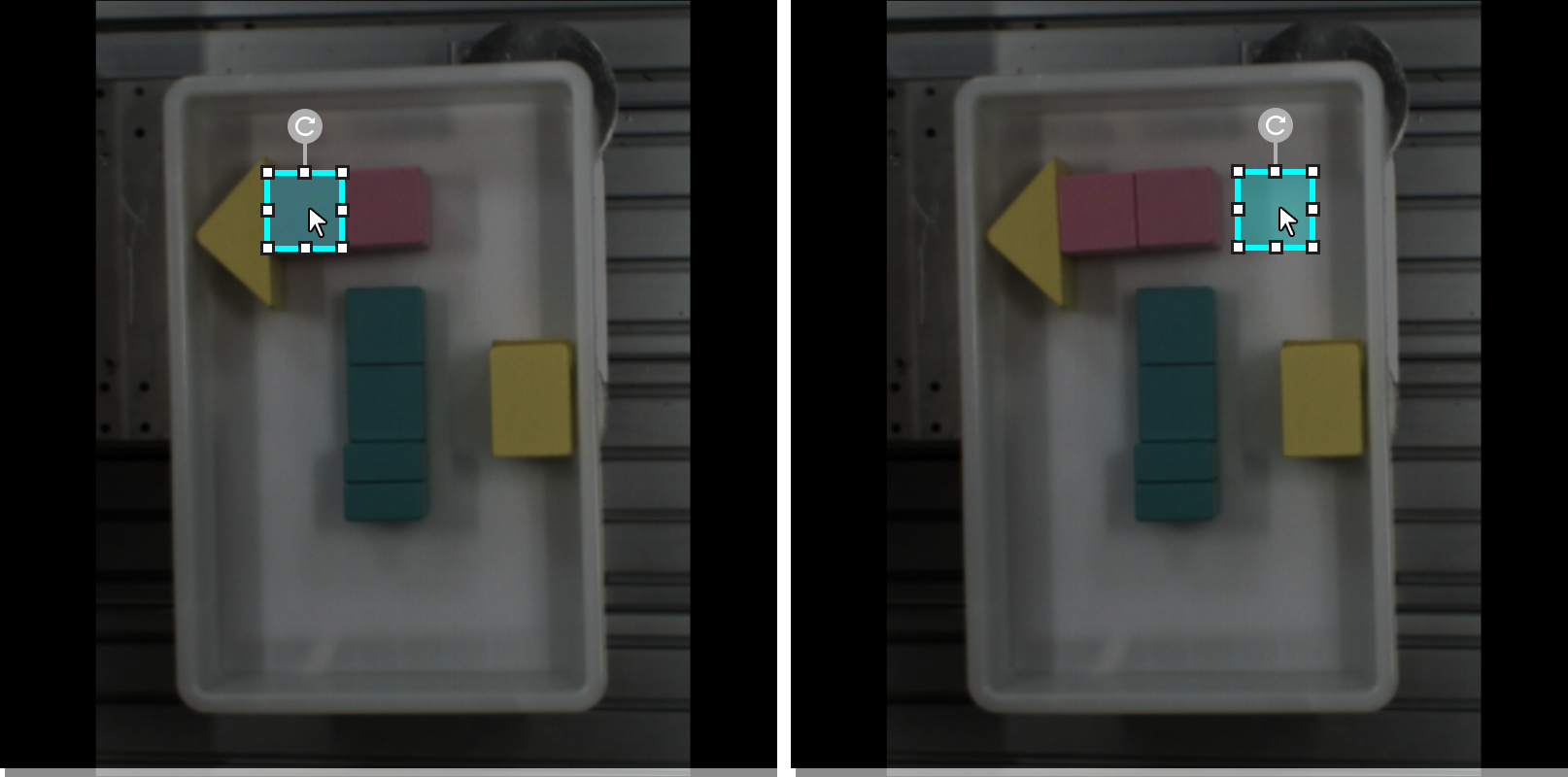Introduction to Labeling Tools
You can use labeling tools to label the images and hence provide data for deep learning training.
| Please create labels of corresponding classes according to the needs of the current project before using labeling tools. |
Polygon Tool
The Polygon Tool can draw polygon labels with more vertices, which is suitable for objects of complex shapes.
-
Click
 (or press P on the keyboard).
(or press P on the keyboard). -
Click the first position (vertex) in the selection region, then click the second one, third one, etc., to draw the labels, and right-click to finish. (At least three vertices are required.)
-
If multiple label classes are created, colors corresponding to different label classes should be selected.
After labeling, use the Select Tool to select a label and adjust the label by the following methods.
-
Click the label edges to increase the number of vertices.
-
Right-click a vertex to delete it.
-
Long press the left mouse button and drag the vertex in any direction to modify the label shape.
Ellipse Tool
Use more vertices to make elliptical selections. This tool is suitable for elliptical objects.
-
Right-click
 and then click
and then click  (or press L on the keyboard).
(or press L on the keyboard). -
Long press the left mouse button in the selection region, move it in any direction, and then release the left mouse button to finish the ellipse selection.
-
If multiple label classes are created, colors corresponding to different label classes should be selected.
Rectangle Tool
The Rectangle Tool can be used to draw rectangular labels, which is suitable for rectangular objects.
-
Right-click
 and then click
and then click  (or press R on the keyboard).
(or press R on the keyboard). -
Long press the left mouse button in the selection region, move it in any direction, and then release the left mouse button to finish the rectangular selection.
-
If multiple label classes are created, colors corresponding to different label classes should be selected.
Smart Labeling Tool
The Smart Labeling Tool can be used to automatically select the objects in the image. When multiple objects in an image have large color differences and are scattered, you can use the Smart Labeling Tool to conveniently label the objects in the image.
Currently, the Smart Labeling Tool can work in two modes, and it will automatically switch between them according to the actual situation. Users do not need to manually select a mode.
-
Standard mode (GPU): In this mode, the Smart Labeling Tool has robust labeling capabilities. This tool will automatically switch to the standard mode if the running device has a GPU, with available GPU memory of at least 2.5 GB, and there is no project undergoing training or validation.
-
Lite mode (CPU): In this mode, the Smart Labeling Tool has basic labeling capabilities. This tool will automatically switch to the lite mode if the running device has no GPU, or the available GPU memory is less than 2.5 GB, or there is a project undergoing training or validation.
Steps
-
Click
 (or press A on the keyboard).
(or press A on the keyboard). -
Move the cursor in the selection region and then click the object to be labeled.
-
If the selection cannot completely cover the object, click the uncovered part to expand the selection area.
-
If the selection covers the areas outside the object, right-click these areas to reduce the selection area.
-
-
Click Apply in the upper-left corner of the selection region.
You can use the Select Tool to fine-tune the labeled contour by the following steps:
-
Use the Select Tool to select the label to be adjusted.
-
Adjust the contour in one of the following three ways according to actual situation. Please ensure that the selected area closely aligns with the object contour.
-
Place the mouse cursor on a vertex of the contour. When the cursor turns into
 , long-press the left mouse button and drag the vertex to adjust the contour.
, long-press the left mouse button and drag the vertex to adjust the contour. -
Place the mouse cursor on a vertex of the contour. When the cursor turns into
 , click the right mouse button to delete the vertex.
, click the right mouse button to delete the vertex. -
Place the mouse cursor on the contour. When the cursor turns into
 , click the left mouse button to add a vertex.
, click the left mouse button to add a vertex.
-
|
When the objects differ greatly in colors and have clear contours, it is recommended that you label multiple objects at a time and click Apply. If the objects are not obviously distinct, it is recommended to label one at a time. |
Labeling Settings
You can click the Settings button in the upper-left corner of the selection region to configure parameters for the Smart Labeling Tool. The smart labeling settings take effect for labels that are created after the settings are confirmed.
-
Contour vertex density: Specifies the density of vertices on the contour. Valid values: Standard and Sparse.
-
Standard: Generates more vertices for labels, providing higher precision when manually fine-tuning the contour.
-
Sparse: Generates fewer vertices for labels, suitable for objects with regular shapes that do not require fine-tuned labeling.
-
Pre-trained Labeling Tool
After you validate a model, you can import new image data to the current module and use the pre-trained labeling feature to perform auto-labeling based on this model.
| The pre-trained labeling feature is available only when the current module contains validated models. |
The Pre-trained Labeling Tool can be used only on the following three types of data:
-
Unlabeled data
-
Automatically labeled data (images with a yellow triangle at the front of the image number)
|
|
The pre-trained labeling feature can outstandingly reduce the cost of manual labeling. However, the accuracy of the results depends on the model that you use. We recommend that you train a high precision model before you use the pre-trained labeling feature. |
You can use the Pre-trained Labeling Tool in one of the following three methods.
-
Method 1: Pre-trained labeling button
-
On the upper part of the image list, click the Pre-trained labeling button. All images in the image list will be labeled by using the Pre-trained Labeling Tool.
-
After the labeling process is finished, you can view a yellow triangle in the upper left corner of the sequence number of the labeled images.
-
-
Method 2: Pre-trained labeling option
-
In the image list, select one or more images that you need to label.
-
Right-click the images and select Pre-trained labeling, the labeling process starts. After the labeling process is finished, you can view a yellow triangle in the upper left corner of the sequence number of the labeled images.
-
-
Method 3: Pre-trained Labeling Tool
-
In the labeling toolbar, right-click
 , then click
, then click  (or press D on the keyboard) to select the Pre-trained Labeling Tool.
(or press D on the keyboard) to select the Pre-trained Labeling Tool. -
On the upper part of the image, click Start labeling, and the Pre-trained Labeling Tool will start to label the image. After the labeling process is finished, you can view a yellow triangle in the upper left corner of the sequence number of the image.
-
|
Labeling Settings
You can click the Settings button in the upper-left corner of the selection region to configure parameters for the Pre-trained Labeling Tool. The pre-trained labeling settings take effect for labels that are created after the settings are confirmed.
-
Contour vertex density: Specifies the density of vertices on the contour. Valid values: Standard and Sparse.
-
Standard: Generates more vertices for labels, providing higher precision when manually fine-tuning the contour.
-
Sparse: Generates fewer vertices for labels, suitable for objects with regular shapes that do not require fine-tuned labeling.
-
VFM Labeling Tool
Mech-DLK incorporates the visual foundation models (VFMs) developed by Mech-Mind. You can use the VFM Labeling Tool powered by the visual foundation models to quickly label datasets.
The VFM Labeling Tool can be used only on the following three types of data:
-
Unlabeled data
-
Automatically labeled data (images with a yellow triangle at the front of the image number)
|
You can use the VFM Labeling Tool in one of the following three methods.
-
Method 1: VFM labeling button
-
On the upper part of the image list, click the VFM labeling button. All images in the image list will be VFM-labeled.
-
After the labeling process is finished, you can view a yellow triangle in the upper left corner of the sequence number of the labeled images.
-
-
Method 2: VFM labeling option
-
In the image list, select one or more images that you need to label.
-
Right-click the images and select VFM labeling, the labeling process starts. After the labeling process is finished, you can view a yellow triangle in the upper left corner of the sequence number of the labeled images.
-
-
Method 3: VFM Labeling Tool
-
In the labeling toolbar, right-click
 , then click
, then click  (or press S on the keyboard) to select the VFM Labeling Tool.
(or press S on the keyboard) to select the VFM Labeling Tool. -
On the upper part of the image, click Start labeling, and the VFM Labeling Tool will start to label the image. After the labeling process is finished, you can view a yellow triangle in the upper left corner of the sequence number of the image.
-
After the labeling is completed, Mech-DLK will generate a label class named "model_label" for the labels created by the visual foundation models.
If you want to modify VFM Labeling Settings, please follow those steps:
-
Right-click on
 and select VFM Labeling Tool.
and select VFM Labeling Tool. -
Click
 on the upper area of the labeling area.
on the upper area of the labeling area. -
In the window of VFM Labeling Settings, you can modify the VFM labeling results.
Labeling Settings
You can click the Settings button in the upper-left corner of the selection region to configure parameters for the VFM Labeling Tool. The VFM labeling settings take effect for labels that are created after the settings are confirmed.
-
Contour vertex density: Specifies the density of vertices on the contour. Valid values: Standard and Sparse.
-
Standard: Generates more vertices for labels, providing higher precision when manually fine-tuning the contour.
-
Sparse: Generates fewer vertices for labels, suitable for objects with regular shapes that do not require fine-tuned labeling.
-
-
Label confidence: Filters labels with confidence higher than this value. Confidence indicates the accuracy of the labeling results. The higher the confidence, the more accurate the labeling results are.
Settings the confidence too high may result in a lower number of displayed labels. -
Max num of labeling objects: Specifies the maximum number of labels.
Template Tool
You can use the Template Tool to set an existing selection as a template. After setting, you can use this template to rapidly label contours and objects with the same pose.
It is suitable for scenarios where there are multiple neatly arranged objects of the same type in an image, which can improve labeling efficiency.

-
Click
 (or press C on the keyboard).
(or press C on the keyboard). -
Click the region that needs to be set as the template.
-
Move the template to the object that you need to select, adjust the angle of the template to make it fit the object, and then click it.
-
Coarse adjustment: Press and hold the Shift key and then scroll the mouse wheel.
-
Fine adjustment: Adjust the Rotation angle parameter.
-
| During labeling, press and hold the Ctrl key and click the selection to switch the template. You can also click Replace template and then click the selection to achieve the same purpose. |
Mask Tool
If there are some irrelevant parts that may interfere with model training/inference, you can use the Mask Tool to cover such parts. The masked parts will not be involved in training/inference.
You can choose among the following three mask tools built in the software according to actual needs.
Mask Polygon Tool
-
Click
 (or press Shift + P on the keyboard)
(or press Shift + P on the keyboard) -
Set “Fill” for the mask.
-
Click the first position (vertex) in the selection area, then click the second one, third one, etc., to draw the labels, and right-click to finish.
Mask Eraser Tool
The Mask Eraser Tool can be used to erase the masks.
-
Click
 (or press Shift + E on the keyboard)
(or press Shift + E on the keyboard) -
Long press the left mouse button in the selection area and move in any direction.
Adjust the slider to change the eraser size.
ROI Tool
You can use the ROI Tool to set the region of interest.
Setting the ROI can avoid interferences from the background.
-
Click
 (or press O on the keyboard).
(or press O on the keyboard). -
Adjust the ROI frame in the selection region.
-
Click the
 button in the lower right corner of the ROI to save the setting, or click the
button in the lower right corner of the ROI to save the setting, or click the  button to disable the ROI Tool.
button to disable the ROI Tool. -
Click the Reset button in the upper left corner of the image to reset the ROI.
Select Tool
You can use the Select Tool to select, move, and adjust the selections.
-
Click
 (or press F on the keyboard).
(or press F on the keyboard). -
Move the cursor in the selection region and then click the selection to be processed.
|
Adjust size |
|
Rotation |
|
Move |
|


